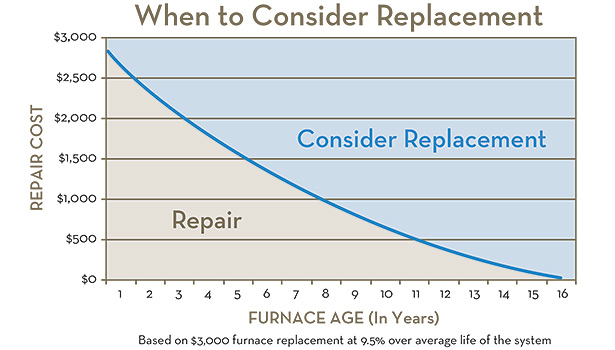Like it or not, weather plays a big role in our business. Oh, yes, I have heard all the hype: we’re weather-enhanced, not weather-driven, etc., but, the fact is, the more extreme the temperature, the more systems fail. Extreme temperatures create urgency, and that translates into more sales; either from an actual failure or from the fear that an older system may fail under the added strain.
This year has been anything but extreme. Blame it on La Nina, El Nino, or climate change in general. Unfortunately, the heating season was lackluster and with everything seemingly stacked against us, what’s a company to do?
You could try a mass advertising campaign to coax people into replacing their systems. This could prove to be expensive, and the return on this approach is likely to be very low, especially since replacing a working system is usually not a priority when, in the summer, you can open a few windows and be perfectly comfortable. A better approach would be to start mining your customer base.
There are two ways you can mine your customer base: Look for opportunities on service calls or look for opportunities in your service and installation records.
Mining your Base from the Service Side
The first objection I usually hear is, “How are you going to look for opportunities on service calls when the weather is mild and there are no service calls?” The answer is simple: Start doing your spring maintenance checks now. This should give you a few hundred service calls.
Most customers won’t think twice about scheduling spring maintenance four months early. When you do get the question, “Why so early?” Don’t be unnerved, simply respond, “We’re trying to take care of all our customers before the warm weather hits this year.”
The next step is to meet with your service technicians and explain to them that they should be looking for systems where replacement may be a good option for the customer. Ask them to pay particular attention to systems where:
• There is excessive rust or corrosion in the heat exchanger;
• Blowers are exceptionally dirty and need to be cleaned;
• Secondary heat exchangers are dirty;
• Evaporators are dirty;
• Blower motors or inducer motors have high amp draws; or
• Safety circuits (flame roll outs, etc.) are worn or defective.
These repairs, by themselves, may not warrant the customer looking at replacement options, but if two or three of these repairs are needed, replacement may be a good option.
Technicians need to ask customers if they would like to know their replacement options. Most technicians become uncomfortable talking to customers about replacements and they need some tools to help them through the process.
One tool is a score card, which is available through some manufacturers. In this process, the technician assigns a score based on the system’s age, condition, amount of repairs needed, etc. If the score is above a certain value, system replacement is recommended.
Another tool is a graph based on the value of a system throughout its life. You can create the graph by amortizing the cost of the replacement system over its average life span. If the repair costs are higher than the value of the unit, the customer should look at his or her replacement options.
As you encourage technicians to look for replacement opportunities, be very careful they don’t become overzealous and recommend replacement when it is not warranted.
Mining your Base from Your Records
The next method to mine your customer base comes from your records. Hopefully, if you are like most companies, over the years, you have a record of all the systems you have installed. Also, your service records should include the model and serial numbers of systems you haven’t installed.
Using the serial numbers from your service and installation records, create a list of equipment that is more than 12 years old. It’s important that you look at all the equipment you have listed for each customer. There is a tendency for some companies to only replace a furnace or air conditioner. This means a homeowner with a relatively new air conditioner may have a much older furnace that needs to be replaced.
Once you have your list, create a mailer offering a special promotion. It can be anything from an additional savings on a replacement system or including an additional IAQ product with the installation. Create a sense of urgency by having an expiration date.
Following up on the mailer will increase your response rate. Most often, this takes the form of a follow-up phone call. Before you start, be sure you understand and comply with your state’s “no-call list” laws. If you decide to make calls, you will likely find numbers that are no longer active or have been assigned to another person.
A mailer like this gives you a great opportunity to update your database. Some of your mailers will be returned because your customer has moved and the forwarding time has expired. The better the information in your database, the better the response you will have with future mailers.
Mining your customer base is not easy, but it may be the best chance you have to generate sales leads when the weather isn’t cooperating.
Publication date: 12/22/2014
Want more HVAC industry news and information? Join The NEWS on Facebook, Twitter, and LinkedIn today!



Report Abusive Comment